
Research Article
Adv Res Text Eng. 2020; 5(1): 1042.
Identifying the Causes of the Spandex Breakage of Woven Garments and its Solutions
Shariful Islam1*, Mahbubul Haque2, Arifuzzaman3, Shaharia Ahmed4, Babul Sarker5 and Mosharof Hossain6
1Department of Textile Engineering, City University, Bangladesh
2Department of Textile Engineering, Daffodil International University, Bangladesh
3Department of Textile Engineering, City University, Bangladesh
4SGS Bangladesh Limited, Bangladesh
5Department of Apparel Manufacturing Technology, Institute of Science, Trade and Technology, Bangladesh
6Department of Textile and GDPM Technology, Saic Institute of Management and Technology, Bangladesh
*Corresponding author: Shariful Islam,Department of Textile Engineering, Faculty of Science and Engineering, City University, Dhaka, Bangladesh, Email: sharifultextiles@gmail.com
Received: August 01, 2019; Accepted: January 01, 2020; Published: January 07, 2020
Abstract
The aim of this research is to investigate the causes of the spandex breakage of woven garments while manufacturing and to find out their solutions.97% of cotton and 3% of spandex woven fabrics were used for making the woven garments. Woven garments of different stages like non-wash garments, garments with spandex breakage and garments without spandex breakage were used in this research for experiment. Performances of the elasticity of the spandex and its content were assessed using IR (Infrared Radiation) spectroscopy with the facilities of the FTIR (Fourier Transform Infrared) instrument in agreement with ASTM E168 Standard. Diffusion of infrared radiation delineates the elastic performances and its content on the garments with the standard specified in ASTM E168.Spandex portion of the denim garments has a tendency to go inside just after cutting since in this stage yarns do not have any tension. Sewing needle cut the yarns during stitching. The more the stitch per inch is, the more the spandex breakage is. Temperature of the needle increases while stitching and this increased temperature spoils the spandex portion by melting inside it. Higher temperature from dyeing bath spoils the spandex portion of the woven garments. Insufficient sewing allowance, incorrect sewing needle, improper machine tension, scrapping on garments, access temperature all the things were the cause of the spandex damage of the elastic garments.Using of special ball point needle, using of rotary knife while cutting, avoidance of using hot gun, avoiding chlorine bleach and stone wash, using of low temperature ironing, using of dummy while scrapping and all other steps mentioned in the research can be applied practically to overcome spandex breakage of garments.Due to having poor facilities of the testing laboratories only a few experiments with FTIR test were carried out in this research.This research is practiced based and the findings can be beneficial to the personnel involved in the textile industries who are responsible for the manufacture of spandex garments and to control of their properties. This research opened possible ways for the scholar to further study in this field.
Keywords: Spandex breakage; Elasticity; Breaking point; IR radiation; Elastic performances
Introduction
Different scholars worked related to these experiments at different times where literature review exposed different results. Some of which were similar and some of them were widely dissimilar. Due to the range of variables involved if one parameter was changed then the other property of the fabrics were changed. Shariful, et al. experimented on spandex fabric and found that, temperature enhanced the elastic performances of cotton spandex woven fabrics [1].
Shariful, et al. experimented on cotton spandex woven fabrics and proved that, the strength of cotton spandex woven fabrics can be optimized by suitable heat setting temperature. Strength of cotton spandex woven fabrics can be increased with the increased of temperature. But over heat could spoil the strength properties of cotton spandex woven fabrics [2].
Shariful, et al. experimented the shrinkage properties of cotton spandex woven fabrics. They proved that, shrinkage properties of cotton spandex woven fabrics can be controlled with proper heat setting temperature [3].
Halim, et al. experimented that elastic clasps for handbags, suspenders, boots and leggings can be improved with proper heat setting temperature. This procedure of fashioning has the primary elastic components that can improve the minimum level that required. They designed the masticator as a technique to support marmalade elastic [4].
Chen, et al. reported that the elasticity and strength of spandex has been combined into a extensive variety of clothes, particularly in skin-tight wears. An advantage of spandex is its momentous strength and elasticity and its capability to coming back to the inventive figure afterward extending and earlier dehydrating than commonplace cloths. For fashion, spandex is typically assorted with cotton or polyester, and accounts for a minor proportion of the concluding fabric, which therefore holds greatest of the appearance and sensation of the additional fibers [5].
Hou, et al. reported in the mid of 1970s and found at the appearance of the Ladies’ Freedom Movement. Girdles came to be allied with anti-independence and representative of an era that was rapidly transient away. DuPont was not prepared to wildness a marketplace that they were knowingly dependent on. In reply, DuPont re imagined spandex as the aerobic suitability drive arisen in the 1970s [6].
Carosio, et al. was attentive in evolving an artificial elastic fiber in the 1930s, which was completed in 1959. Spandex’s transformative characteristics were permissible to integrate into other clothes in addition girdles and undergarments. They flung a wideranging persuasive movement for its spandex brand, enchanting announcements and full-page ads in highest ladies’ periodicals for example Harper Bazaar. Fashion’s unique chic image, Audrey Hepburn aided shoot the product on and off-screen in the late 50’s; reproductions and performer like Joan Collins and Anne- Margret monitored Hip burns artistic by posturing in spandex fashion for photograph discharges and periodical insurances [7].
Atakan, et al. experimented that the spandex pre polymer is additionally responded with an equivalent quantity of di-amine. This response is recognized as manacle allowance response. The subsequent explanation is dilute with a in credit to yield the revolving explanation. The solvent assistances to mark the solution diluter and additional effortlessly fingered afterwards it can be driven into the spandex clothing manufacture compartment [8].
Lie, et al. explained that cotton fabric is made with short stable fiber which produces in shells on the cotton plant. Cotton is grownup in heartfelt temperatures, mainly in the southern US, China and India. Cotton with spandex can make the elastic garments that can provide comfort and warmth. These cloths are also durable and can be long lasting [9].
Zhang, et al. experimented that the foremost constituent of ladies’ full-length along with panty hose is strand nylon, with around 20% spandex supplementary for elastic performances. Ladies garments mainly classifies hosiery comprising spandex into 2 clusters that comprising up to 18% spandex in pure hosiery for fitting and luxury, and other is containing 19% and better for rheostat. In woven fabrics, the spandex-containing in the straightway provides stretch and recovery parallel everywhere the wearers physique or limb [10].
Nourbakhsh, et al. experimented that spandex is used in fabrics battered at clothing like shirting and bottoms both for ladies and men’s. The spandex quantity of the entire fabric is 2 to 5 percent is sufficient to offer suitability and comfort. Bare spandex is applied in circular knits by platting a filament of spandex with an edge of the main yarn over the similar needle. Wrapping is the casing scheme of choice, but expertise enhancements are probable to aid core-spinning substitute wrapping in past few years [11].
Novák, et al. reported that swimwear fabrics comprise a developed percentage of spandex than extra groups excluding control garments. At maximum cases, nylon with its attraction for high colors is the mate fiber that weights spandex confrontation to chlorine. Fibers absent to these belongings are prohibited from long-term opposition and upgrading in this distinguishing serious of producers list [12].
Sahu, et al. reported that elastic fabric got huge fame in 1980s in a variety of fashion items, commencement with biking shorts. Garments manufacturing units were using spandex and spandex blends in tights, bodysuits cloths both for men and women. Ladies jagging’s also got extensive popularity at that time [13].
Almetwally, et al. reported that spandex is known by its trade name that is Lycra in 1959 by DuPont Company. Lycra is a fiber that DuPont investigators established as an substitute to the latex-based rubber used for women’s wear. Lycra was a massive upgrading over latex because it could be stretched up to six hundred times than its original shape [14].
Chen, et al. reported that French Olympic ski team sported elastic cloths in 1968s. They proved that elastic cloths can be best suited for sportswear like biking, skiing, swim wear etc. in the mid-1990s elastic cloths were very popular for its flexibility, warmth, fittings and relaxing ability [15].
Zhan, et al reported that spandex industry was very popular in the mid 1987s. At those decades’ athletes, swimmer, sports men, bodybuilder all used elastic cloths for showing their performances. In the 1999 spandex industries start growing very fast [16].
Cai, et al. reported that the unique elastic characteristics of the spandex are a direct result of its chemical content. This fiber is made up of numerous polymer bonds. This spandex is made up of two main parts. One is rigid segment and another is flexible section. Rigid one is responsible for increasing strength but flexible is responsible for giving elastic performances [17].
Sarpkaya, et al. reported that spandex has crystalline and amorphous interior section. Most of the parts are amorphous. This amorphous part can be crystalline with appropriate heat setting temperature. Heat in the spandex gives permanent structure to the fibers containing spandex [18].
Masteikaite, et al. reported that if the fiber is stretched to its supreme length, the rigid sections bond with each other. The nebulous units persist in an extended form. It made the fibers hard and rigid. When the power is detached the amorphous sections retreat and the fiber revenues to its relaxed state. By using the elastic characteristics stretched cloths are produced [19].
Yan, et al. reported that the prime use for spandex fibers is in cloths. They are beneficial for a number of causes. Major, they are overextended constantly, and will coming virtually back to unique magnitude and figure. Additionally, they are inconsequential, easy, and plane. Furthermore, they are simply colored. They are strong as they are resilient to scratch and the poisonous characteristics of body perspiration, and detergents. They are well-matched with other resources, and can be rolled with other kinds of fibers to create sole fabrics, which have physiognomies of both fibers [20].
Materials and Methods
Materials
Woven garments made up of cotton spandex woven fabrics were used in this research for doing the required experiments as mentioned in (Table 1). Woven garments of 96% Cotton and 4% Spandex were used in this research. Non-wash woven pant, accepted pant by quality control department and rejected pant by quality control department were used in this research. (Table1) the sample used in this research and for conducting the experiments (Table 1).
In Table 1, for the given construction in serial no A, 10× (12+70D)/90×70 show a construction of a cotton spandex woven fabric. Cotton and spandex percentage is 96% Cotton 4% Spandex. 4% spandex is inserted in weft way to provide elasticity. Here, warp yarn count is 10 which is a non-stretched yarn made up of cotton polyester blend, but weft yarn count is (12+70D) that means, spandex of 70 denier is used with the core of 20 count in weft way to make it stretched yarn. Thread density in ends per inch is 90 and picks per inch is 70. Two other constructions in serial no B and C show the same characteristics. It is clear that percentage of spandex content depends on the value of Denier. The more the denier value is, the more the percentage of spandex content is.
Methods
FTIR can create an infrared spectral scan of samples that refract Infrared Light (IR) in accordance with ASTM E168 standard. The absorbency of the sample’s of infrared light at different frequencies creates a distinctive “spectral fingerprint” on the basis of the frequencies that the samples absorbs infrared light and the greatness of those immersions. The resultant spectral scan is generally definite to a universal class of samples. Transmittance of infrared radiation defines the elastic performances and its content on the garments with the standard specified in ASTM E168.
Equipment used in this research
Measurement tape: A metal measuring tape was used in this research to measure the width of the fabric. It is made up of plastic rubber with millimeter, centimeter and inch scale to measure the substances. It is a common measuring tool and it is designed to measure any substance easily. Figure 1 shows a measurement tape (Figure 1).

Figure 1: Measurement tape komelon SL2925 12 pack 25ft with self locking
system, USA, 2010.
Scissors: A metal scissors was used in this research to cut the fabric at various stages. A couple of metal scissors comprises of a pair of metallic knife-edges revolved so that the sharpened ends slide in contradiction of each other when the levers conflicting to the pivot are closed. This scissors can cut the fabric very easily and perfectly. Figure 2 shows a fabric cutting scissors (Figure 2).
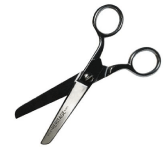
Figure 2: Fabric cutting scissors, Heritage 445 5-1/4 (13.3 cm), USA, 2009.
Golden ball point sewing needle: Golden Ball point sewing needle was used in this research. This needle is made beautifully with its sewing edge in a round shape so that the spandex in fabric would not be damaged while cutting. Figure 3 shows the sewing needle (Figure 3).
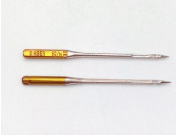
Figure 3: Singer sewing machine ballpoint needles 2045 4 sizes.
GSM cutter: GSM cutter was used in this research for getting the GSM of the fabric. The diameter of the cutter is 11.26 cm at its cutting edge. After cutting the fabric GSM is obtained with electric balance. Figure 4 shows GSM cutter (Figure 4).

Figure 4: Schroder gsm200 germany blade gsmcircular cutter.
Electric balance: Electric balance is used in this research to get the weight of the fabric in the unit of gm/m2. Figure 5 shows an electric balance (Figure 5).

Figure 5: Electronic balance in ambala, Haryana.
Counting glass: Counting glass was used in this research to count the number of thread per inch of a fabric. Counting glass has a magnifying glass that can help to enlarge the surface of the fabric that help to count the number of yarn in an inch of fabric. Figure 6 shows a counting glass (Figure 6).
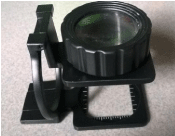
Figure 6: Herovo counting glass, China, 2013.
Fiber composition tester: Fiber composition was tested with (TESTEX Fiber Content Analysis Tester TB300) in accordance with AATCC20 standard in an independent Laboratory. Yarns were removed from fabric and untwisted to get the fibers. A bundle of fiber segments were taken and mixed 1 or 2 drop of paraffin oil and kept the sample on the platform of telescope, the aplified image is projected on the CCD camera. The digital image of sample was processed, measured and identified the fiber types. Figure 7 shows a fiber analysis tester (Figure 7).
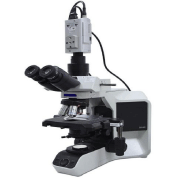
Figure 7: TESTEX fiber content analysis tester tb300, china, 2006.
Machine used in this research
Sewing machine: Vintage Brother Deluxe 400 sewing machine was used in this research to join the two parts of the fabrics. This machine can sew the spandex fabric sensibly. Figure 8 shows a sewing machine (Figure 8).
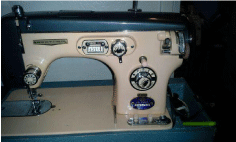
Figure 8: Vintage brother DeLuxe 400 sewing machine.
Bar tack sewing machine: Bar tack sewing machine was used in this research to join the belt loop, pocket corner and zipper fly. Figure 9 shows a JUKI Bartack Machine, Model: LK 1900 (Figure 9).
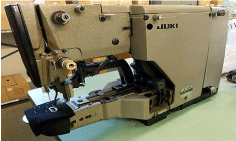
Figure 9: JUKI bartack machine, Model:LK 1900.
FTIR machine: FTIR machine was used in this research to get the IR spectrum of the fabric using infrared radiation. This machine helps to get the elastic performance of the fabric. Figure 10 shows a Nicolet IS 50 FT-IR Spectrometer (Figure 10).
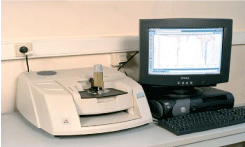
Figure 10: Nicolet IS 50 FTIR spectrometer.
Causes of spandex breakage
Spandex damage or breakage is a regular phenomenon inelastic or stretch garments manufacturing. Spandex breakage is also called spandex missing or Lycra missing. This problem is not primarily detected while fabric manufacturing or processing but it is visible extensively just after garments washing. Spandex filament is damaged in excessive temperature either in heated chamber or in steam compartment. It is very sensitive to alkali, chlorine bleach and abrasion as well. Spandex filaments can be missed through the width of fabric. Spandex can be damaged because of temperature application while fabric processing. Spandex can be damaged in garments stage during marking and just after cutting the cloths for sewing. Spandex filament comes out from fabric due to not having any tension after the selvedge being cut. Tension variation in fabric also causes spandex breakage in the center position of the sheath. Figure 11 shows the spandex breakage problem (Figure 11).
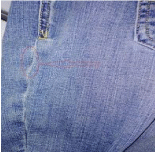
Figure 11: Spandex breakage in the sewing line.
Cutting the fabric after marking
Selvedge protects the fabric at manufacturing stage. Spandex is protected in fabric stage due to this selvedge. After finishing stage for making the garments this fabric has to mark and cut. While cutting the fabric, spandex is also cut and does not get any extra tension. For that reason spandex fibers goes inside of the cloth and start spandex breakage. Figure 12 shows the Spandex breakage due to cutting of the fabrics. Figure 12 shows the spandex is going inside due to cutting and finding no tension (Figure 12,13).

Figure 12: Spandex breakage due to cutting of fabric.

Figure 13: Spandex is going inside due to cutting finding no tension.
Insufficient allowance while sewing
Insufficient allowance while sewing also causes spandex damage. Insufficient sewing allowance fails to protect the spandex at proper place. Therefore sufficient allowance should be provided during sewing. Figure 14 shows insufficient sewing allowances (Figure 14).
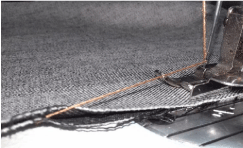
Figure 14: Insufficient sewing allowances.
Improper handling by the operator
If sewing is not done properly and it is not handled by the operator properly while sewing then the spandex is damaged severely. Figure 15 shows improper handling by the operator (Figure 15).
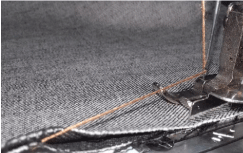
Figure 15: Improper handling by the operator.
Spandex is damaged while sewing
Due to sewing spandex is damaged severely with sewing needle. Figure 16 shows the scene of cutting the spandex with sewing needle (Figure 16).

Figure 16: Spandex is damaged while cutting.
More stitch per inch damages more spandex
The more the number of stitch per inch is, the more the spandex breakage is. Sewing needle is continuously cutting the spandex inside the fabric and damaging it. Therefore reasonable number of stitch like 9 to 10 stitch per inch should be given while sewing the garments. Figure 17 shows more Stitch per inch damages more spandex in the fabric (Figure 17).

Figure 17: More stitch per inch damages more spandex in the fabric.
Application of incorrect size of needle
If the size of the needle is wrong spandex breakage occurs. Needle should be chosen according to the thickness, design and weight of the fabric. Lower number of needle should be used with ball point and thin diameter.
Needle not changed regularly
Performances of the needle are reduced while sewing for long time. Needle should be changed twice in a day to avoid spandex breakage. Bent needle causes more spandex breakage. Needle changing timely basis can reduce spandex breakage problem.
Incorrect mechanism and machine setting while sewing
Needle, pressure feet, feet dog, needle bar, needle plate etc should be adjusted according to fabric properties and process demand. Incorrect mechanism can damage the fabric containing spandex. Figure 18 shows spandex breakage due to incorrect mechanism and machine setting (Figure 18).

Figure 18: Spandex breakage due to incorrect mechanism and machine
setting.
Unbalanced sewing allowance
Improper sewing allowance can hamper the washing process. After washing, spandex can be damaged due to unbalance sewing allowance.
Stretching while sewing
During sewing if fabric is stretched and sewn at that time, up and down appearance can occur at the sewing line. This practice can cause more spandex breakage after washing.
More SPI at bar tack area
More Stitch Per Inch (SPI) in the bar tack area causes more yarn cutting containing spandex while sewing therefore more spandex breakage. Less SPI should be used at the bar tack area for less spandex breakage. Bar tack can be attached after garments washing to avoid spandex breaking problem.
Over speed and high pressure of machine
Over speed and high pressure of machine can cause more spandex breakage.
Sharpness of machine bed
If the sharpness of the machine bed is more there is more possibility to cause more spandex breakage.
Stretching and pulling the yarns after sewing
If the yarns are stretched and pulled after sewing, there is more possibility to cause more spandex breakage.
Excess scrapping on garments
Inaccurate silicon paper for scrapping causes more spandex breakage. Silicon carbide paper for scraping on garments should be selected based on the thickness and nature of fabric.
Excess temperature while washing and drying the garments
Spandex fibers are damaged at high temperature. The melting temperature for spandex is about 240°C. high temperature from washing bath and dryer causes more spandex breakage.
Application of gas dryer instead of steam dryer
Gas dryer cannot control the temperature accurately. Steam dryer can provide temperature accurately in a constant rate. Therefore, use of gas dryer causes more spandex breakage.
Tying goods tightly with rope
After sewing if the garments are tied tightly with rope, they got crinkled at that tying place. Spandex breakage becomes visible after garments washing. So, garments should be tied carefully with rope.
Keeping the zipper open
While washing if the zipper remains open, extra force created on zipper attaching fly opening area. For that reason, spandex breakages are found more in the zipper opening and joining area. So, zipper are should be closed while garments washing.
Solution of the Spandex Breakage
Minimize the SPI
Stitch Per Inch (SPI) should be minimized as much as possible while garments sewing so that spandex damage will be less by needle. More SPI cut more spandex while sewing.
Dye the fabric at wet processing zone rather than dyeing at garments zone
Spandex gets adequate tension at fabric stage supported by the selvedge of the fabric. Spandex shrinks and damages more in hot water. Selvedge holds and protects the spandex portion of fabric from being shrinking and damaging. After cutting the fabric for garments making, the spandex do not get any tension. So, spandex damage and shrinkage will be more at this stage of garments dyeing with high temperature. Therefore, it is a good practice, if fabrics could be dyed at wet processing zone rather than garments dyeing zone.
Changing the needle on timely basis
While sewing needle becomes over heated. Overheat can melt and damage the spandex of the cloths. So, needle should be changed timely basis.
Bent needle should be changed
Needles may be bent due to sewing. Bent needles injured the spandex of the fabric thereby causes spandex breakage. So, bent needles should be changed on timely basis.
Use of ball point needle
Application of ball point needle instead of sharp needle can reduce spandex breakage difficulties. These ball point needles are well designed and specially prepared for sewing the spandex garments. Golden ball point needle can reduce spandex breakage problems.
Use of spandex protector
Anti-slipping agent or lycra protector can be used to reduce spandex breakage difficulties. Anti-slipping agent acts on spandex fibers to impart good bounce and also to get non slip effect. Antislipping Agent FT-WP is a cat ionic substance so it can be used with some anionic chemicals. This protector provides good stability to the spandex garments. Spandex protector is heat resistant and gives excellent results to get rid of spandex breakage.
Use of rotary knife while cutting
During cutting rotary knife should be used. Cutting with rotary knife causes less spandex breakage.
Bar tack stitching
Bar tack should be stitched after washing the garments. Bar tack stitching before washing the garments causes more spandex breakage.
Sewing allowance
Sewing allowances must be reserved as much as possible. This practice will help to keep the spandex filament at the core of the yarn. It will help to reduce the spandex breakage.
Do not use hot gun
Do not use hot gun to eliminate potassium permanganate infection from garments. Hot gun will cause more spandex breakage by damaging the spandex inside due to hot air blow.
Do not do chlorine bleach
Chlorine bleach can injure and deteriorate spandex fibers. Concentration of chlorine bleach should be less like 35%. Higher percentage of chlorine can damage the spandex.
Do not use Alkali
Application of alkali is not suggested. Instead, acid enzyme can be applied. Ph should be kept in between 5 to 6.
Do not stone wash
Do not apply stone while washing. Stone wash causes more spandex breakage.
Resin
Apply low-temperature formaldehyde resin rather than higher temperature. Application of higher temperature will cause more spandex breakage.
Use dummy while scrapping
Application of dummy while scrapping the garments causes less spandex breakage.
Use hand washing with cool water by end user
End user should wash the spandex garments by hand rather than machine wash. Machine wash causes more spandex breakage. Hot water damages the spandex inside the garments. So, cold water is better to wash the garments containing spandex.
Use low temperature ironing
Application of low temperature iron is helpful to reduce spandex damage. Keeping the iron for too long time at one place of garments causes more spandex damage. Iron should be moving on the garments.
FTIR Experiment
FTIR experiments were carried out at two different sample garments as mentioned in figure 19 and in figure 20. FTIR values were taken at the spandex damaged areas. The clamp of the machine was opened at first. One part of the sample was inserted and placed at the machine. Infrared Radiation (IR) was transmitted throughout the sample fabric to identify the elasticity of the spandex by its content percentage. If the infrared radiation passed through the samples where spandex damage was more, the FTIR instrument generates less pick values for the Wavelength it covers. It the infrared radiation passed through the samples where spandex content was more, the FTIR instrument generates higher pick values for the wavelength it covers. On the other hand, where spandex content was less, the FTIR instrument generates lower pick values for the wavelength it covers. FTIR data was obtained against Infrared radiation with the facilities of the FTIR instrument and the figures were shown in (Figure 21, 22).
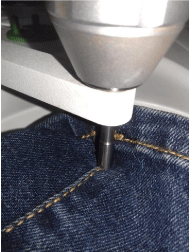
Figure 19: FTIR experiment on the garments of more spandex breakage.
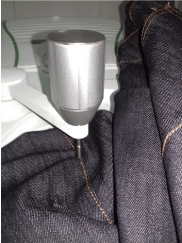
Figure 20: FTIR experiment on the garments of no spandex breakage.

Figure 21: FTIR spectral observation of the garments with no spandex breakage.

Figure 22: FTIR spectral observation of the garments with more spandex breakage.
FTIR Observation
A distinctive IR radiation is generated in the mid-infrared area of the light range. An FTIR spectral observation can effortlessly detect the amount of active elastane in the samples and also can measure the elasticity. Highest pick values were obtained for the fabrics of more spandex present in the fabrics and vice versa. When the amount of elastane is less in the fabric, at that time IR exposed less pick values. With the FTIR instrument, infrared radiation is emitted to the surface of the fabric.
A computer program is used to detract the peaks connected to the samples from the spectral scan and then assessment of the enduring spectral scan is completed. Elastic performances of the samples can be assessed using IR spectrum with the facilities of a FTIR instrument since the infrared rays can enter a few microns into the sample surface and shown the results with infrared radiation. When the samples cannot grip infrared light a spectral scan is not achieved.
IR radiation can never pass through a metal substance since light never refract through it. FTIR is the 1stsensiblestage in detecting a composite or polymer. FTIR is applied for controlling substances and for infection analysis. Indefinite spectral scans can be scrutinized to define the base substances of the unidentified by associating with their scan to spectral scans of recognized materials if they are deposited in a computer-based collection. A distinctive infrared scan is produced in the mid-infrared area of the light range.
The mid-infrared area is from 650 to 4000 wave numbers. Computer based spectral can rapidly match an unknown spectrum with a known spectra located in multiple databases in a short time. FTIR assessment of unknown materials can be done by corresponding with the substances infrared peak points, whichever by the diffusion or absorbance of the IR to the peaks of alike infrared scans of recognized substances. The better the matches are the higher the certainty for a correct identification of the unknown polymers is.
Figure 15 shows the IR spectrum of the fabric of no spandex breakage and figure 16 shows the IR spectrum of the fabric of spandex breakage. Spandex content were more on the fabric of no spandex damage and the picks ofinfrared radiation was more in the IR spectrum scan. Where IR did not detect the spandex lowest picks values were obtained.
Conclusion
It is seen throughout the research that, the causes of the spandex breakage was investigated and the possible solutions were discussed. Infrared radiation (IR) was emitted and transmitted through the fabric surface with the facilities of the FTIR instrument to illustrate the elasticity and the spandex content it had. While conducting the experiment it was seen that, at most of the cases spandex was damaged due to cutting of the spandex with sharp needle, with high temperature, uneven handling etc. Gas burner damaged the elasticity of the spandex due to melting. Steam burner was better than gas burner since; temperature of the gas burner could not be controlled properly. Steam compartment could provide accurate temperature continuously without any damage to the elastic fibers. Alkali and chlorine bleaches are harmful for the spandex processing. The pH should be kept in between 5-6 since spandex is weaker on alkali solution. Dummy should always be used before scrapping the garments. Stone wash was always harmful for the spandex garments that were why it was avoided. Infrared radiation passed through the surface of the fabric expressed the elastic level and its performances. This research is practice based and further study in this field can enhance smooth production of cotton spandex woven garments and to control of their properties.
References
- Islam S, Alam SMM, Akter S. Identifying a suitable heat setting temperature to optimize the elastic performances of cotton spandex woven fabric. Research Journal of Textile and Apparel. 2018; 22: 260-270.
- Islam S. Attaining Optimum Strength of Cotton-Spandex Woven Fabric by Apposite Heat-Setting Temperature. Journal of The Institution of Engineers (India): Series C. 2018; 601-606.
- Islam S, Alam SM M, Akter S. The consequences of temperature on the shrinkage properties of cotton spandex woven fabrics. Journal of Textiles and Polymers. 2019; 7: 2-7.
- Abdel HES, Abdel MFA, Al-Deyab SS,El-Newehy MH. Chitosan and monochlorotriazinyl-β-cyclodextrin finishes improve antistatic properties of cotton/polyester blend and polyester fabrics. Carbohydrate Polymers.2010; 82: 202-208.
- Chen S, Zhang S, Galluzzi M, Li F, Zhang X, Yang X, et al. Insight into multifunctional polyester fabrics finished by one-step eco-friendly strategy. Chemical Engineering Journal. 2019; 358: 634-642.
- Hou W, Ling C, Shi S, Yan Z, Zhang M, Zhang B, et al. Separation and Characterization of Waste Cotton/polyester Blend Fabric with Hydrothermal Method. Fibers and Polymers. 2018; 19: 742-750.
- Carosio F, Di Pierro A, Alongi J, Fina A, Saracco G.Controlling the melt dripping of polyester fabrics by tuning the ionic strength of polyhedral oligomeric silsesquioxane and sodium montmorillonite coatings assembled through layer by layer. Journal of colloid and interface science. 2018; 510: 142-151.
- Atakan R, Bical A, Celebi E, Ozcan G, Soydan N, Sarac AS. Development of a flame retardant chemical for finishing of cotton, polyester, and CO/PET blends. Journal of Industrial Textiles. 2018; 49: 141-161.
- Liu Y, Zhou S, Liu W, Yang X, Luo J. Least-squares support vector machine and successive projection algorithm for quantitative analysis of cottonpolyester textile by near infrared spectroscopy. Journal of Near Infrared Spectroscopy. 2018; 26: 34-43.
- Zhang W, Ji X, Wang C,Yin Y. One-bath one-step low-temperature dyeing of polyester/cotton blended fabric with cationic dyes via β-cyclodextrin modification. Textile Research Journal. 2018; 89:1699-1711.
- Nourbakhsh S, Montazer M,Khandaghabadi Z. Zinc oxide nano particles coating on polyester fabric functionalized through alkali treatment. Journal of Industrial Textiles. 2018; 47: 1006-1023.
- Novák I, Valentin M, Špitalský Z, Popelka A, Sestak J, Krupa I. Superhydrophobic polyester/cotton fabrics modified by barrier discharge plasma and organosilanes. Polymer-Plastics Technology and Engineering. 2018; 57: 440-448.
- Sahu S. Utilization of flax, lyocell and spandex fibers for development of composite yarns and preparation of woven and knit fabrics (Doctoral dissertation, GB Pant University of Agriculture and Technology, Pantnagar (Uttarakhand)). 2017; 326.
- Almetwally AA. Multi-objective Optimization of Woven Fabric Parameters Using Taguchi–Grey Relational Analysis. Journal of Natural Fibers. 2019; 1-11.
- Chen Q, Ma P, Mao H, Miao X, Jiang G. The Effect of Knitting Parameter and Finishing on Elastic Property of PET/PBT Warp Knitted Fabric. Autex Research Journal. 2017; 17: 350-360.
- Zhan YZ, Zhao X, Wang W. Theoretical study of the interaction energy of benzodifuranone dye molecule rings. Coloration Technology. 2017; 133: 50- 56.
- Cai G, Yang M, Pan J, Cheng D, Xia Z, Wang X, et al.Large-Scale Production of Highly Stretchable CNT/Cotton/Spandex Composite Yarn for Wearable Applications. ACS applied materials & interfaces. 2018; 10: 32726-32735.
- Sarpkaya Ç, Özgür E,Sabir EC. The optimization of woven fabric tensile strength with taguchi method based on grey relational analysis. Journal of Textile & Apparel/Tekstil ve Konfeksiyon. 2015; 25: 1-7.
- Masteikaite V, Saceviciene V, KopbajevaE,Nurjasarova M. Influence of heat transfer material on the deformability of knitted fabrics. International Journal of Clothing Science and Technology. 2015; 27: 191-206.
- Yan Y, Wu J, Jin Z,Tao J. Performance Research of Knitted Hemp Fabric and Fuzzy Comprehensive Evaluation. In 2016 9th International Symposium on Computational Intelligence and Design (ISCID). 2016; 1: 174-177.